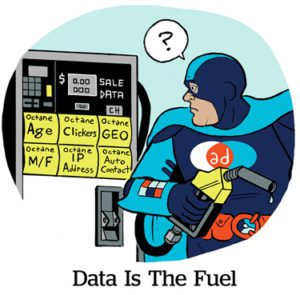Linear addressable TV promises the ability to target audiences at the household level, comparable to streaming.
But addressable TV also has a bunch of kinks to work out before buyers can take full advantage.
Scale is limited, attribution remains a challenge and planning is typically a “painstakingly manual” process that can take multiple days, said Ari Turner, SVP of sales operations at Ampersand, a TV ad sales consortium co-owned by Comcast, Charter and Cox.
On Wednesday, Ampersand announced a new function within the AND platform, its buy-side TV platform, to automate addressable campaign planning and reporting so buyers can reach their audiences across Ampersand’s distribution footprint quicker and more accurately.
Ampersand reaches 65 million addressable homes in the US across five cable operators, including its co-owners (Comcast, Charter and Cox) as well as Altice and Verizon.
Being able to see audience sizes across MVPDs in real time “takes away a lot of the guessing games” and helps clients “buy smarter,” said Laura McElhinney, chief data officer at Horizon Media, which is the first agency to use Ampersand’s new addressable product in a self-serve capacity.
Excepting Horizon, Ampersand’s new product is available for buyers in a managed service capacity. Ampersand eventually plans to make addressable automation available via self-serve for other buyers.
Automation station
Ampersand already uses some automation for addressable audience creation by overlaying client segments with data from third-party identity providers.
The new function allows buyers to automate planning and reporting for addressable buys, something that traditional linear campaigns have historically lacked.
In the past, Ampersand had to match client audiences with the audiences and inventory of its five suppliers one by one and then manually aggregate that supply into a report for buyers, Turner said. Ampersand’s new tool automatically transmits buy-side requests to MVPD partners, pulls in inventory availability from those suppliers based on audience and aggregates that supply within the AND platform in close to real time for clients to buy.
Advertisers in the AND platform can now get an idea of reach and frequency counts for a specific audience across Ampersand’s footprint before deciding whether to execute their buy.
One of the main reasons buyers are starting to lean into addressable TV is because device-level granularity helps them manage frequency caps. A lack of frequency capping leads to wasted budget and viewer vitriol.
Ampersand is also using automation to reduce turnaround time for mid- and post-campaign reporting.
Buyers need mid-flight reporting in order to compare linear addressable performance with that of their streaming and legacy linear campaigns and plan their spending tied to specific business outcomes, McElhinney said, such as brand lift and incremental reach.
For example, an advertiser could use Ampersand’s deduplicated reach and frequency counts to hit specific households that are unexposed or underexposed to a national or local linear campaign.
And if clients provide sales data, Horizon could also map the path to conversion, said McElhinney, who noted that the availability of faster and more granular data is helping traditional linear advertisers, including Horizon’s clients, get more comfortable spending on addressable.
On the horizon
Faster reporting also means buyers can scale their audience by including inventory that reaches other, similar audiences within the AND platform.
“Now, addressable has scale on the linear side,” Turner said, because advertisers can use Ampersand’s measurement reporting to quickly expand their reach while also employing frequency capping across linear and streaming campaigns.
Horizon Media, for example, can augment first-party audience IDs from its identity platform, Blu, with Ampersand’s audience data to achieve optimal reach and frequency for a particular campaign.
Audience matching is anonymous and done within a data clean room environment.
“Before, we’d have to wait days for partners to pull together inventory plans based on client audiences,” McElhinney said. “With audience building as part of the planning process, we don’t have to wait.”
















